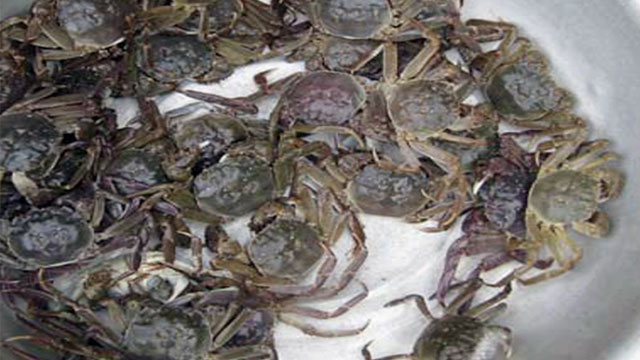Around the time of September and October of the lunar calendar every year on the section of the Thuong River near Luc Dau Giang, passing through some areas of Yen Dung district such as Dong Viet, Dong Phuc, Thang Cuong, a crab with a very strange name will appear. is “Crab Leather” .
The size and weight of the crab is close to that of a crab, which can be processed into many dishes such as: crab steamed with beer, fried crab, pounded crab cooked in soup, … but among the above dishes that are most popular and easy to make is still crab. steamed with beer. Fresh crabs are washed, put in a pot, add a little soup powder, drain, ginger pour a little beer just enough to put on the stove, wait for the beer to boil slightly, then put on high heat to boil until it can be eaten.
Ripe skinned crabs have a very attractive orange-yellow color. The crab meat is sweet, the crab shell is quite soft. Boiled crab served with dipping sauce made from soup powder and mustard with a little lemon added, nothing can be as attractive.
Source: Collected internet.
Festivals are one of the special features in Vietnamese culture. The diversity of ethnic religions makes Vietnam one of the countries with many festivals. Festivals are held to commemorate cultural events. Community spirit is the essence of every festival. There are two parts to festivals: ceremony and festival. The ceremony is to express respect for divinity and people's dreams of health, wealth, luck and happiness for themselves and their loved ones. Festivals are unique features of culture, community, religion, etc. The two biggest traditional festivals are Lunar New Year and Hung King's Death Anniversary. During Lunar New Year, each region has other festivals to celebrate such as Lim Festival in Bac Ninh province, Giong Festival in Soc Son, Perfume Pagoda Festival in Hanoi. Hung King's death anniversary is held every year from the 8th to the 11th of the third lunar month. It is organized so that everyone remembers their roots. With many landscapes recognized by UNESCO as world natural heritage and a wealth of unique regional cultural spaces, Vietnam is a legendary land and also a storehouse of attractive material for filmmakers to exploit. long lasting waterfall.
The cultural identity of ethnic groups is clearly expressed in community life and in economic activities from customs, costumes to culinary styles. Below are the unique features of Vietnamese culture that you can learn about.
Vietnam's history began from 1 to 2 thousand years BC. Over many centuries with the Ly, Tran, Le, and Nguyen dynasties, from the mid-19th century, Vietnam became a French colony. After the August Revolution, the Democratic Republic of Vietnam was born. The Battle of Dien Bien Phu in 1954 marked the end of the French in the territory, but Vietnam was divided into two countries: the Democratic Republic of Vietnam in the North and the Republic of Vietnam in the South. After the events of April 30, 1975, Vietnam was unified and from July 2, 1976, officially named the Socialist Republic of Vietnam.
Nha Rong Wharf and Ho Chi Minh Museum, Ho Chi Minh City Branch, at 1 Nguyen Tat Thanh Street, District 4, Ho Chi Minh City. This place not only displays artifacts associated with his life and career, but also especially marks the event that on June 5, 1911, President Ho Chi Minh left Vietnam from Nha Rong Harbor to begin his journey. traveling around the world to find a way to save the country and liberate the nation from the yoke of French colonialism...
